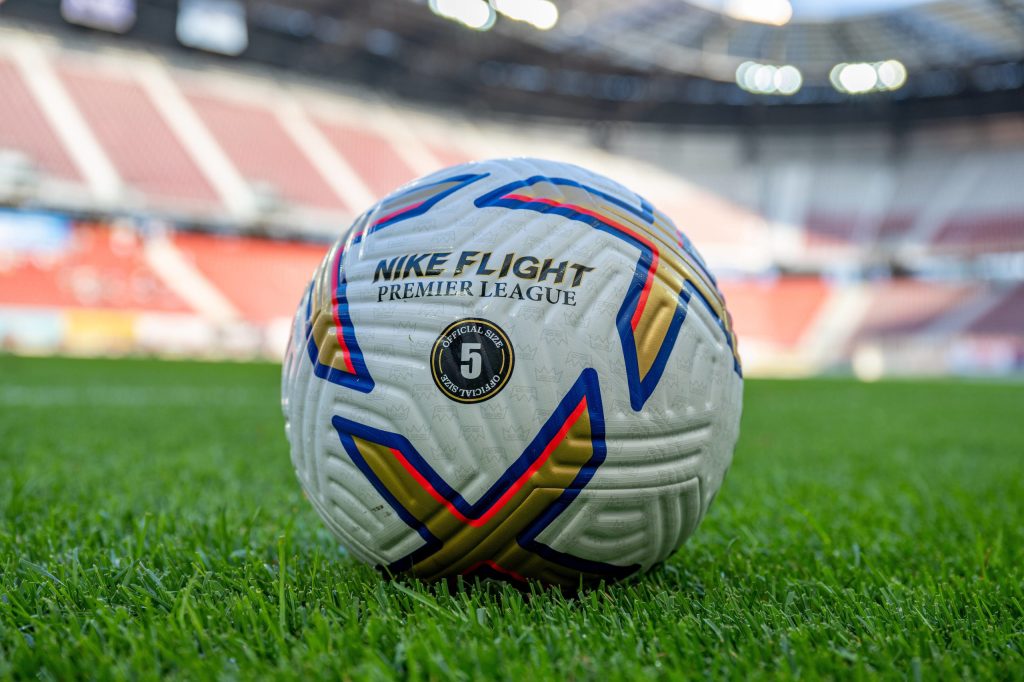In this data analysis, I will be using data to help produce the team of the season so far for the 2020 Eliteserien season. The statistics and data used in this analysis have been obtained from Wyscout and the formation used will be a 4-3-3 similar to that of Liverpool and, more importantly, Eliteserien champions-elect Bodø/Glimt.
To make the team a little more interesting and diverse, I will be excluding players from the aforementioned league-leaders, and players must also have played more than 1000 minutes in order to be considered. Players who are no longer competing in the Eliteserien have also been excluded.
This data analysis will be done in three parts, the first of which will look at the goalkeeper and defenders. It is also worth mentioning that the majority of data considered will look at attacking returns for all bar a few positions given the aim to pick a team suitable for replicating the tactics of Bodø/Glimt.
Goalkeeper
For the position of goalkeeper, I have used three metrics. These are: save rate, goals conceded vs expected goals and progressive passing. These have been chosen as an aim to counter any bias of ‘busier’ goalkeepers from teams towards the bottom of the league being viewed favourably in terms of overall saves recorded, as well as favouring those who are comfortable in possession (as per our intended tactics). The above graph shows the percentage of saves made as well as the overall number of shots faced. Those in the top-right quadrant score best in that they maintain a higher save percentage whilst facing a larger number of shots. The trio who stand out most are as follows:
The above graph shows the percentage of saves made as well as the overall number of shots faced. Those in the top-right quadrant score best in that they maintain a higher save percentage whilst facing a larger number of shots. The trio who stand out most are as follows:
Kristoffer Klaesson – The Vålerenga man has the highest save rate of 73.53% from an average of 4.69 shots faced per 90 minutes.
Jonas Deumeland – The Start player has a save rate of 72.73%, having faced an average of 4.44 shots per 90 minutes.
Viljar Myhra – The Stromsgodset goalkeeper has faced an average of 5.51 shots per 90 minutes whilst maintaining a save rate of 69.12%. The above graph plots the number of goals conceded vs the xG against. Essentially this shows whether a goalkeeper has conceded more or fewer goals than expected given the quality of shots he has faced. Those who sit closer to the vertical axis than the horizontal axis are outperforming xG. The trio to stand out here are:
The above graph plots the number of goals conceded vs the xG against. Essentially this shows whether a goalkeeper has conceded more or fewer goals than expected given the quality of shots he has faced. Those who sit closer to the vertical axis than the horizontal axis are outperforming xG. The trio to stand out here are:
Jonas Deumeland – The Start man has conceded only 1.21 goals per 90 mins despite an xG against value of 1.51.
Andreas Linde – The Rosenborg players has conceded 1.14 goals per 90 mins from an xG against value of 1.36.
Kristoffer Klaesson – The Vålerenga goalkeeper has an xG against value of 1.36 per 90 minutes but has conceded only 1.24.
From the two data metrics so far, it appears Klaesson and Deumeland are the standouts, and a decision between them will need to be made on their passing ability.
The above graph charts the accuracy of progressive passes made as well as the number attempted per 90 minutes. A position towards the top right is again the best. We can see that Hansen, Wichne, Lie and Makani score highly here but we are focused only on Deumeland and Klaesson.
Klaesson attempts more progressive passes per 90 minutes with 7.27 compared to 6.37 of Deumeland, though his accuracy of 72.15% is lower than his competitor’s 81.01%.
The decision is a tough one, but I am going to side with Deumeland. The former Bundesliga player has surprisingly played only half of Start’s games this season, but his performance vastly overshadows that of their other goalkeeper (Wichne).
Centre-backs
In choosing two centre-backs, I have used five metrics. These are defensive duels, aerial duels, shots blocked, interceptions and progressive passing. In addition, I have also decided to include one left-footed player and one who is predominantly right-footed.
The position of centre-back is the one I feel demands the most attention paying to pure defensive data, and the four defensive metrics are used with the aim of selecting the most well-rounded defenders. Again, progressive passing is included as our chosen tactics dictate all players must be comfortable on the ball.
The above graph charts the percentage of defensive duels won against the frequency of duels per 90 minutes. The top performers again lie in the top-right quadrant and the five to stand out the most are as follows:
Henrik Heggheim – The young Viking defender averages 6.13 defensive duels per 90 minutes with a success rate of 71.68%.
Viljar Vevatne – Viking’s other centre-back averages 7.12 defensive duels per 90 minutes with a success rate of 71.43%.
Ivan Näsberg – The Vålerenga man boasts a success rate of 70.13% from his average of 3.52 defensive duels per 90 minutes, and he’s the best left-footed player for this metric.
Jonas Grønner – The Aalesund player has a success rate of 71.43% from his average 5.61 defensive duels per 90 minutes.
Bjørn Inge Utvik – The Sarpsborg 08 defender averages 5.67 defensive duels per 90 minutes with a success rate of 69.57%.
The above graph charts the same as the previous one but for aerial duels. The real standout here is Gustav Valsvik, his 76.6% success rate from an average of 7.45 aerial duels per 90 minutes is impressive. He also offers an additional left-footed option.
The other player worth mentioning from this graph is fellow Stabaek player Yaw Ihle Amankwah who boasts a success rate of 72.37% from his average 5.38 aerial duels per 90 minutes, though his overall defensive duels statistics aren’t strong enough to make him of consideration.
Of those who stood out in overall defensive duels, Utvik fares best winning 63.49% of an average 6.21 aerial duels per 90 minutes.
The above graph looks at the number of interceptions and shots blocked per 90 minutes with Rosenborg’s Even Hovland excelling in both categories. He blocks an average of 1.49 shots per 90 minutes and produces 7.16 interceptions per 90 minutes. His duel numbers are below-par, however, and therefore he is not worthy of overall consideration.
Valsvik again scores highly in these categories, averaging 1.19 blocks and 6.66 interceptions per 90 minutes. Of the others under overall consideration, Vevatne performs best averaging 0.64 blocks and 6.23 interceptions per 90 minutes.
Utvik slightly outperforms Heggheim which leaves us with him and Vevatne the right-footed options, and Valsvik and Näsberg the left-footed ones.
The above graph charts the number of progressive passes attempted per 90 minutes against the accuracy of these passes, and once again the top performers are positioned towards the top right.
Of our two right-footed options, Vevatne’s accuracy of 74.77% from an average 9.41 progressive passes attempted per 90 minutes are superior to Utvik’s 70% from 5.91 attempted; however, the latter’s overall statistics are slightly better, and he wins a place in the team.
Despite Valsvik’s aerial superiority, his progressive passing is below the standard of Näsberg. The Vålerenga player has an impressive accuracy of 78.82% from his average 7.77 progressive passes per 90 minutes whereas his rival is over 10% below that level with just 68.79% of his average 11.18 per 90 minutes being successful. Given the tactics this team is to be set to, I believe Näsberg provides the perfect partnership with Utvik in an already youthful-looking team.
Full-backs
As for the centre-backs, I have used five metrics to inform my decision on the full-backs. However, I will be primarily using data based on attacking returns before using a defensive metric to help make the final decision. Again, I will be choosing one left-footed player (left-back) and one who favours his right (right-back).
The five metrics used are assists, crossing accuracy, progressive runs and passes, and defensive duel success. These should allow the selection of full-back’s who contribute effectively in attack whilst being able to defend efficiently when necessary.
The above graph plots the average number of assists per 90 minutes vs the xA assists. The reason for including both is to not miss out on a player producing a good quality of cross/pass only to be let down by the finishing of teammates and, inversely, not to include only players whose numbers may be unsustainable. Two players clearly stand out (top-right corner), but I believe six players make plenty of appeal, and these are as follows:
Espen Ruud – The veteran right-back, who plays for Odds, tops the assists per 90 minutes with 0.34 with an xA of 0.27 backing it up.
Kristoffer Haugen – The Molde left-back leads the way for xA per 90 minutes with 0.33 with his actual assists of 0.26 not too far behind.
Christian Borchgrevink – The Vålerenga youngster, who plays mostly at right-back, produces 0.22 assists per 90 minutes from an xA of 0.2.
Christoffer Aasbak – The Kristiansund left-back matches Borchgrevink’s 0.22 assists per 90 minutes from a slightly lower xA of 0.18.
Alexander Stølås – The Haugesund left-back averages 0.13 assists per 90 minutes, a slight underperformance on his xA of 0.16.
Eirik Wichne – The Start right-back averages only 0.05 assists per 90 minutes, though an xA suggests 0.19 suggests his attacking play is amongst the leaders in the Eliteserien.
Given the tactics I have set out for the team of the year, crossing will be a key component of the full-backs. This graph, which charts the number of crosses per 90 minutes and crossing accuracy, compliments the assist statistics. Once more, a position towards the top-right corner is favourable.
Once again, Haugen is a real standout. Of his average 5.78 crosses per 90 minutes, 46.27% are successful. Another who catches the eye is Mjøndalen’s Alexander Betten Hansen who averages 4.14 crosses per 90 minutes with an accuracy of 52.94%. Hansen has, however, played as a right wing-back and a right-winger this season which, coupled with his below-par numbers in other areas, makes him unworthy of overall consideration.
The other five under consideration from their assist numbers make for interesting viewing in that they each sit on pretty much a direct diagonal line. This shows that as their number of crosses increases their accuracy decreases in an almost completely proportional fashion. Given Borchgrevink still sits in the top half of attempted crosses amongst the full data set, his accuracy of 47.44% from an average of 3.41 attempted per 90 minutes is probably the best overall result of the five.
The above graph plots both the progressive runs and progressive passes made. The absence of any player in the top-right section shows that the full-backs tend to produce a superior number for one whilst scoring low on the other.
Ruud and Wichne stand out as extremes in the graph, adding credence to them being players under overall consideration. Haugen and Aasbak also sit on a similar curve to those two, again showing that there is a strong relationship between the players under consideration. Stølås falls below the other five under overall consideration, and we can therefore exclude him as a potential selection.
This leaves us with Aasbak and Haugen as our two left-back options. Our three right-back options remain the same.
As well as being effective going forward, the full-backs must also be efficient defensively. The above graph charts the number of defensive duels per 90 minutes and the success rate of these duels. First, we’ll take a look at our left-back options:
Haugen – The Molde man is involved in an average of 6.3 defensive duels per 90 minutes with a success rate of 64.38%.
Aasbak – The Kristiansund player is involved in more defensive duels per 90 minutes, 6.75, though his success rate of 53.19% falls way below that of his rival.
Kristoffer Haugen is, therefore, a straightforward selection at left-back, worth noting he also stood out for his side in the UEFA Champions League qualifiers this summer.
Next, let’s look at the right-back options:
Borchgrevink – The Vålerenga player is involved in an average of 7.43 duels per 90 minutes with a success rate of 64.12%.
Wichne – The Start man is involved in more defensive duels per 90 minutes, 8.42, though has a success rate of only 56.4%.
Ruud – The veteran falls short in both categories, successful in only 52.46% of his average 5.96 defensive duels per 90 minutes.
Ruud’s defensive numbers do not back up his attacking returns meaning Borchgrevink is the selection at right-back.
Conclusion
Using key data for goalkeepers and defenders, I have produced a back five for the Eliteserien 2020 team of the year which is defensively solid as well as being comfortable on the ball and capable of chances. Jonas Deumeland is selected as the goalkeeper with Vålerenga’s Christian Borchgrevink at right-back. The two centre-backs are Sarpsborg 08’s Bjørn Inge Utvik (right) and another Vålerenga player Ivan Näsberg (left), and the left-back is Molde’s Kristoffer Haugen.
The second part of this data analysis will look at the midfield.






